Top-Rated Tourist Attractions in Beijing, China |world tour
Top-Rated Tourist Attractions in Beijing
Beijing itself has no shortage of unique sightseeing opportunities . It is home to some of the country's best-known tourist attractions, including a section of the famous Great Wall of China at Badaling Pass. Among the city's many historical and cultural points of interest are the Imperial Palace, Beihai Park, Coal Hill Park, and the Heavenly Temple, most of them within the well-preserved historic city center.
Other things to do include exploring the mammoth Tiananmen Square, numerous important temples, the new construction brought about by the city's increased prosperity and major events such as the 2008 Beijing Olympics. When you've had your fill of sightseeing, enjoy the city's great shopping and dining.
Plan your trip to the Far East with
our list of the top tourist attractions in Beijing, China.
1. The Palace Museum and the Forbidden City
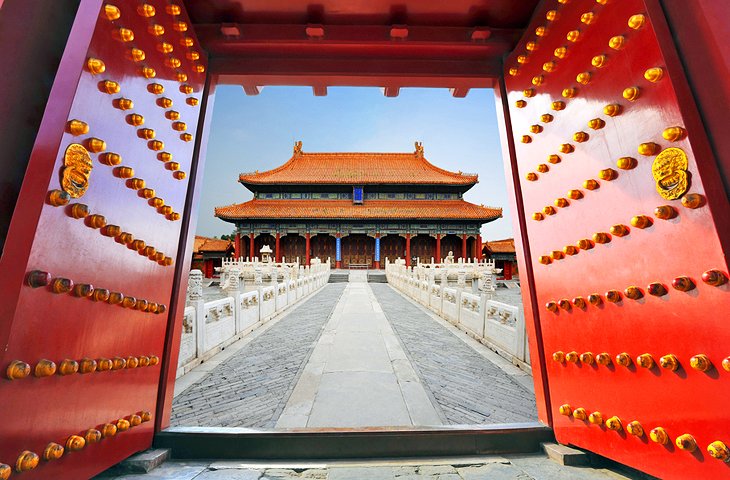
The Imperial Palace, also known as the Forbidden City, is China's most significant attraction and can trace its origins back to the Yuan Dynasty of the 13th century. Its immense size is the result of enlargements made during the Ming Dynasty between 1406 and 1420, after the capital was transferred here from Nanking.
All told, this beautiful palace has been home to 24 Ming and Qing Emperors, earning its nickname of the Forbidden City due to the fact ordinary citizens weren't allowed access. The complex covers 720,000 square meters, all of it surrounded by a 10-meter-high wall with towers in the four corners and a 50-meter-wide moat. It's divided into an area used for ceremonial and administrative purposes, as well as the private quarters once used by the Emperor and his concubines.
Highlights include the Meridian Gate, built in 1420; the Golden River Bridges, a network of five richly decorated white marble bridges; and the Hall of Preserving Harmony, which functioned as the Emperor's banquet hall.
Other places to visit include the Palace of Heavenly Purity, the largest hall in the Inner Court, and the Hall of Military Courage, a permanent residence and private audience hall for the emperors. The impressive 35-meter-high Hall of Supreme Harmony is notable as the country's largest surviving wooden building and for its splendidly decorated gilded imperial throne.
Located just a short walk away from The Palace Museum stands the historic Imperial College (Guozijian). Founded in 1287 by Kublai Khan and only closed in 1900, this beautiful structure served as the country's national university, and often saw the Emperors of old visit to further their education and knowledge. The complex covers more than 10,000 square meters, much of which can be explored.
Address: 4 Jingshan Front Street, Dongcheng, Beijing
2. The Great Wall of China
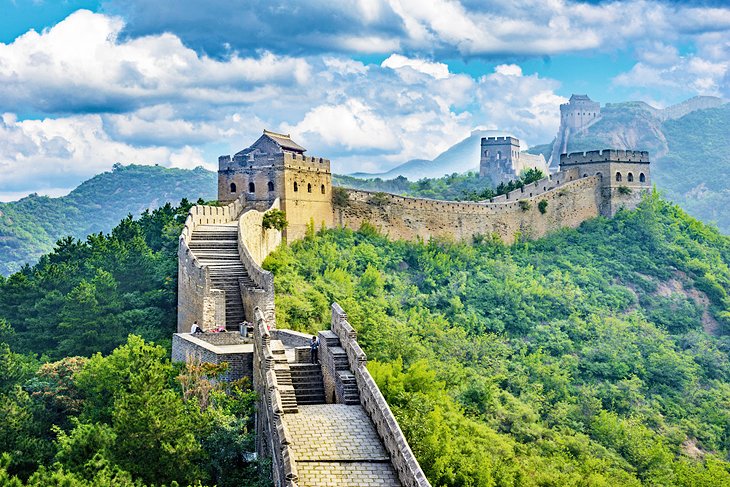
Beijing is only an hour away from what is undoubtedly one of the country's most famous historic structures: the Great Wall of China. Here at Badaling Pass, the first part of the Wall to be opened to tourists in the 1950s, you can enjoy a walk along an impressive section of the Great Wall dating from the 16th century and standing up to eight meters high.
Along the way, you'll be able to enjoy numerous towers and parapets offering superb views over the surrounding dramatic scenery. While a hilly walk, you can in fact take a pleasant cable-car ride up to the wall.
This much-visited section of the Great Wall can get busy, so if possible try to plan your trip for an early arrival. Better still, consider signing up for a tour. The Great Wall of China at Badaling and Ming Tombs Day Tour offers great insight into the history and is an extremely easy way to visit this site.
Another popular spot to experience the Great Wall is Mutianyu, parts of which date back to the 6th century. Rebuilt and expanded over the centuries, it is becoming increasingly popular for its magnificent views, which are particularly beautiful during spring and autumn.
3. Tiananmen Square
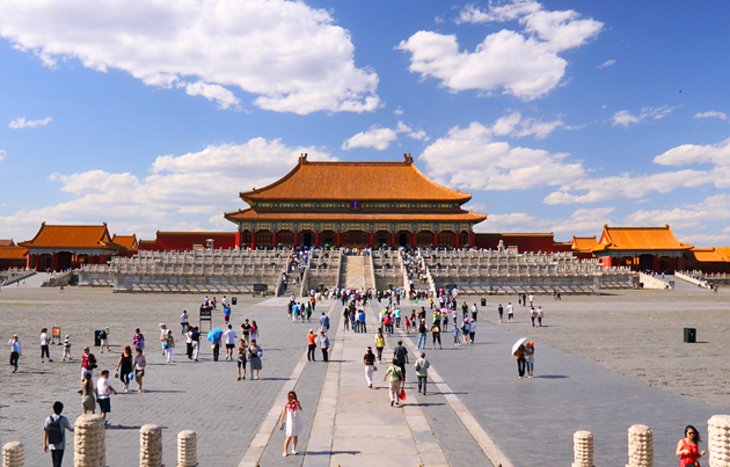
Tiananmen Square (the Square of Heavenly Peace) is the world's largest inner-city square. Designed to hold a million people, it was built to celebrate the 10th anniversary of the Chinese Republic in 1958. Considered the center of communist China, the square's symbolic importance dates back to May 4th, 1919, when students demonstrated against the Chinese provisions of the Treaty of Versailles.
Highlights of a visit include the Monument to the People's Heroes (Rénmín Yingxióng Jìniànbei), a 38-meter tall obelisk consisting of 17,000 pieces of granite and marble, and the splendid Tiananmen Gate, known as the Gate of Heavenly Peace. It was completed in 1417 and was once the main entrance to the Imperial City.
Another important gateway is Zhengyangmen, or Qianmen, the southernmost gate into Tiananmen Square. Tracing its roots back to the early 15th century and restored in the early 1900s, this imposing structure is considered one of the most important landmarks in the city.
Other features of note are the Museum of the Chinese Revolution with its exhibits illustrating the various stages of the Chinese revolution from 1919 and the development of the Communist Party, and the Mausoleum of Mao Zedong, where the body of Mao rests in a crystal sarcophagus.
Address: Dongcheng, Beijing
4. Beihai Park
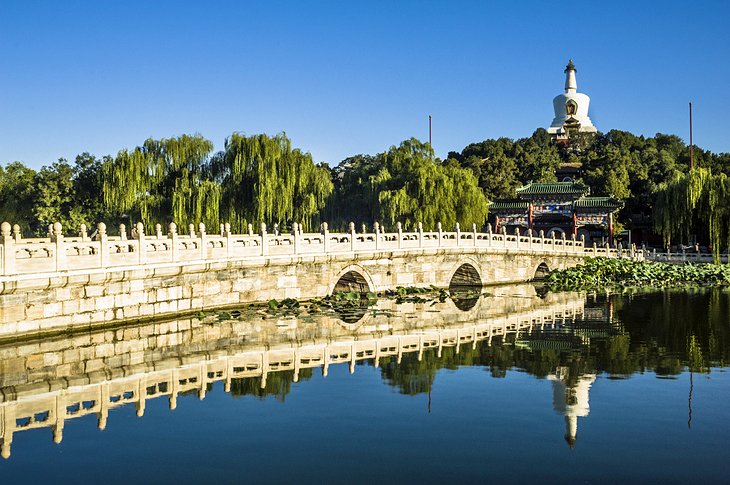
Just a short distance from the Imperial Palace, Beihai Park is one of the oldest surviving imperial gardens in Beijing. Laid out at the beginning of the 10th century, this beautiful open space takes its name from nearby Lake Beihai (North Lake) and offers many good reasons to visit.
Among the park's most important structures are the Round Fort, dating from the Yuan period of 1271-1368, and the spectacular Hall of Enlightenment. Built in 1690, the hall is home to a one-and-a-half-meter-tall Buddha carved from a single block of white jade, and a large black jade vase from the early 12th century.
Another notable feature is the opulent residence of Song Qingling in which the widow of the founder of the Republic, Sun Yat-sen, lived for 18 years until her death (it's now a museum). You'll also want to see the Living Quarters of Mei Lanfang (Mei Lanfang Guju), a famous male star of the Peking Opera who specialized in playing the role of a woman.
Also try to include the residence of Guo Moruo on your Beijing itinerary. It was here, in a home built in traditional Chinese courtyard style, that the famous writer and historian lived from 1963 until his death in 1978. Also include the beautiful 17th-century White Pagoda on the Island of Exquisite Jade on your list.
Address: 1 Wenjin St, Xicheng, Beijing
5. The Temple of Heaven
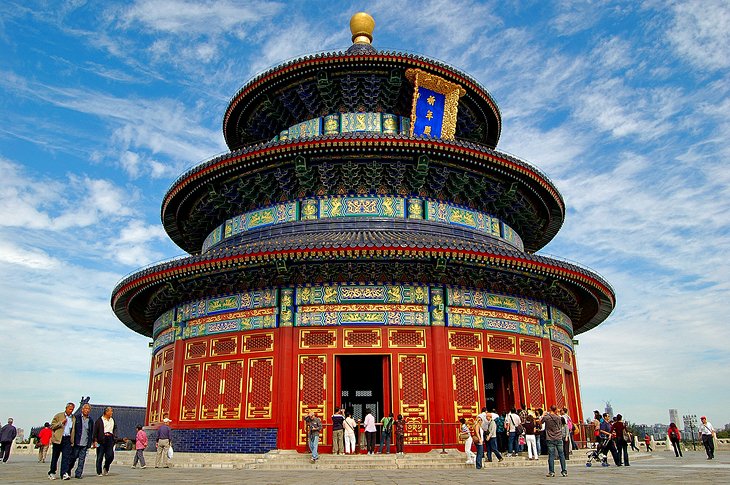
The Temple of Heaven (Tiantán) dates back to 1420 and incorporates a group of some of Beijing's most sacred buildings. Surrounded by lush vegetation, these lovely old temples and shrines are set out in two sections - one rectangular; the other semi-circular - which together symbolize Heaven and Earth.
It was here that, on the day of the winter solstice, the Emperor would ascend the Heavenly Altar in solemn ceremony to pray for a good harvest and offer sacrifices in the brightly decorated Hall of Prayer for Good Harvests (Qinian Dian). Built in 1420, in customary Chinese fashion of wood and entirely without nails, the hall sits on a three-tier marble terrace with balustrades and a roof covered with 50,000 blue glazed tiles (a marble plaque on the floor represents the dragon and the phoenix stone, symbols of the emperor).
Another highlight is the Hall of the Vault of Heaven (Huangqiong Yu). Erected in 153, it boasts a blue-tiled conical roof and was used to store the ceremonial plaques of Heaven and the Officials. Be sure to also visit the temple's Echo Wall, which echoes to even the quietest of voices, an effect exaggerated by three unusual echoing stones.
Address: 1 Tiantan E Road, Dongcheng Beijing
6. The Summer Palace
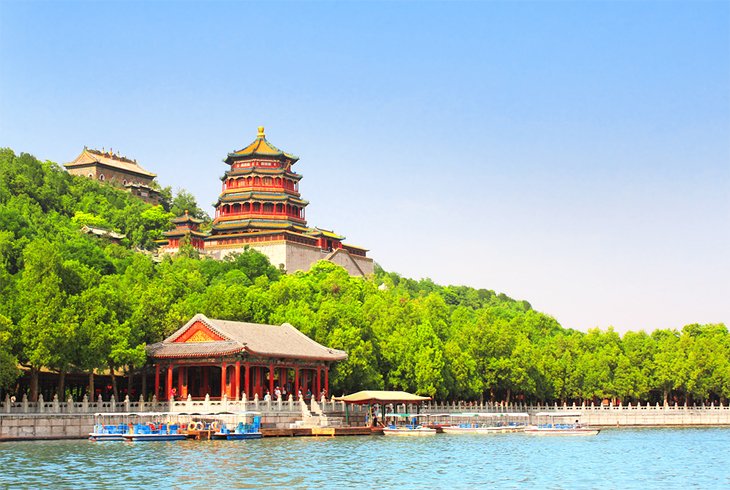
Located an easy 30-minute journey by car, bus, or taxi from the center of Beijing, the city's Summer Palace (Yíhé Yuán) is a must-visit. Dating back to the 12th century and more than 700 acres in size, it's a picture-perfect setting, which certainly befits its royal status, boasting a large 700-year-old man-made lake and beautiful gardens.
Often included on organized tours, top things to see here are the western-styled "Marble Ship" (Shifang), the Hall of Well-being and Longevity (Renshou Dian) with its elaborate throne, and the beautiful courtyard adjoining the Hall of Happiness and Longevity (Leshou Tang Hall). You'll also want to see the impressive 19th-century Great Theatre, where you can catch performances of traditional Chinese plays and music.
One of the more popular things to do, if time permits, is to take a ride aboard the small pleasure craft (kids love the dragon-themed vessels) that ferry tourists to one of the palace's temples, as well as a stroll past the traditional riverside shops on Suzhou Market Street.
Address: 19 Xinjiangongmen Road, Haidian District, Beijing
Comments
Post a Comment